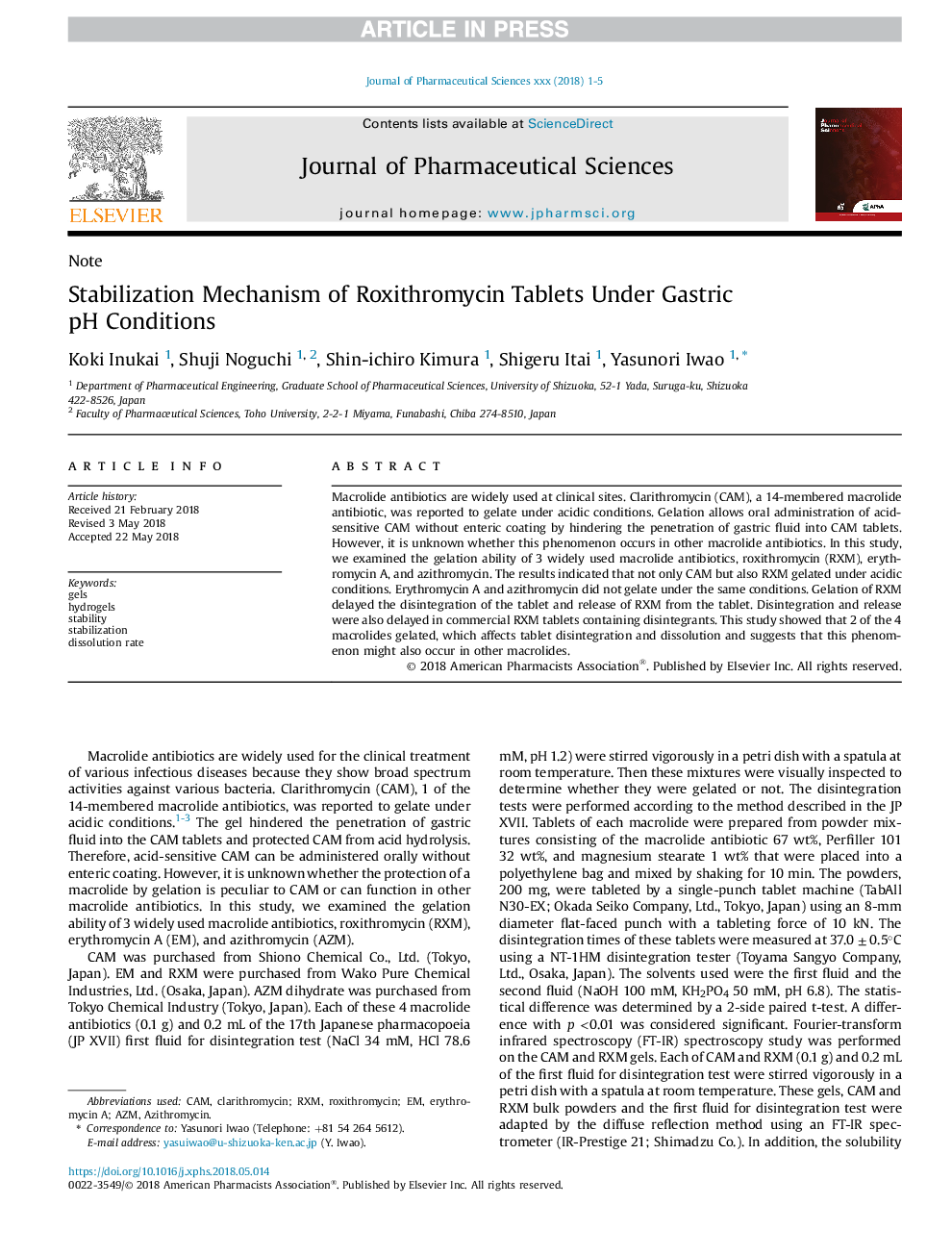| Article ID | Journal | Published Year | Pages | File Type |
|---|---|---|---|---|
| 8513133 | Journal of Pharmaceutical Sciences | 2018 | 5 Pages |
Abstract
Macrolide antibiotics are widely used at clinical sites. Clarithromycin (CAM), a 14-membered macrolide antibiotic, was reported to gelate under acidic conditions. Gelation allows oral administration of acid-sensitive CAM without enteric coating by hindering the penetration of gastric fluid into CAM tablets. However, it is unknown whether this phenomenon occurs in other macrolide antibiotics. In this study, we examined the gelation ability of 3 widely used macrolide antibiotics, roxithromycin (RXM), erythromycin A, and azithromycin. The results indicated that not only CAM but also RXM gelated under acidic conditions. Erythromycin A and azithromycin did not gelate under the same conditions. Gelation of RXM delayed the disintegration of the tablet and release of RXM from the tablet. Disintegration and release were also delayed in commercial RXM tablets containing disintegrants. This study showed that 2 of the 4 macrolides gelated, which affects tablet disintegration and dissolution and suggests that this phenomenon might also occur in other macrolides.
Keywords
Related Topics
Health Sciences
Pharmacology, Toxicology and Pharmaceutical Science
Drug Discovery
Authors
Koki Inukai, Shuji Noguchi, Shin-ichiro Kimura, Shigeru Itai, Yasunori Iwao,
